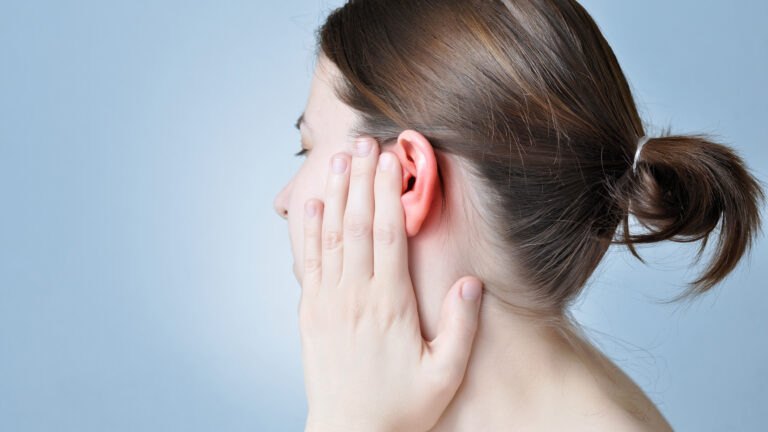Why is my earlobe swollen? How do I treat it? How do I deal with the discomfort including pain or tenderness, redness, itchiness, crusting and so on? Learn what makes your earlobe to swell including piercing, abscess, cauliflower, infection, as well as how you can treatments and remedies.
Earlobe swelling refers to the enlargement, distention, and tightness of this part of your ear due to a number of reasons we are going to discuss. The swelling can be on your entire earlobe, on a part i.e. behind it, on the outer part of or even just under it, depending on the specific cause.
Symptoms to expect
The swelling is often accompanied by symptoms such pain or tenderness, redness, warmth, crusting, flaking, itchiness (swollen itchy earlobes), or rash. Sometimes, you might have a bumpy or lumpy feeling when you touch them, especially if caused by abscesses, pimples, cysts or boils.
Why is my earlobe swollen – causes
If you have this problem there are a number of possible causes. The specific symptoms you have might be a pointer to the possible cause. Some of the common causes include:
1. Piercing
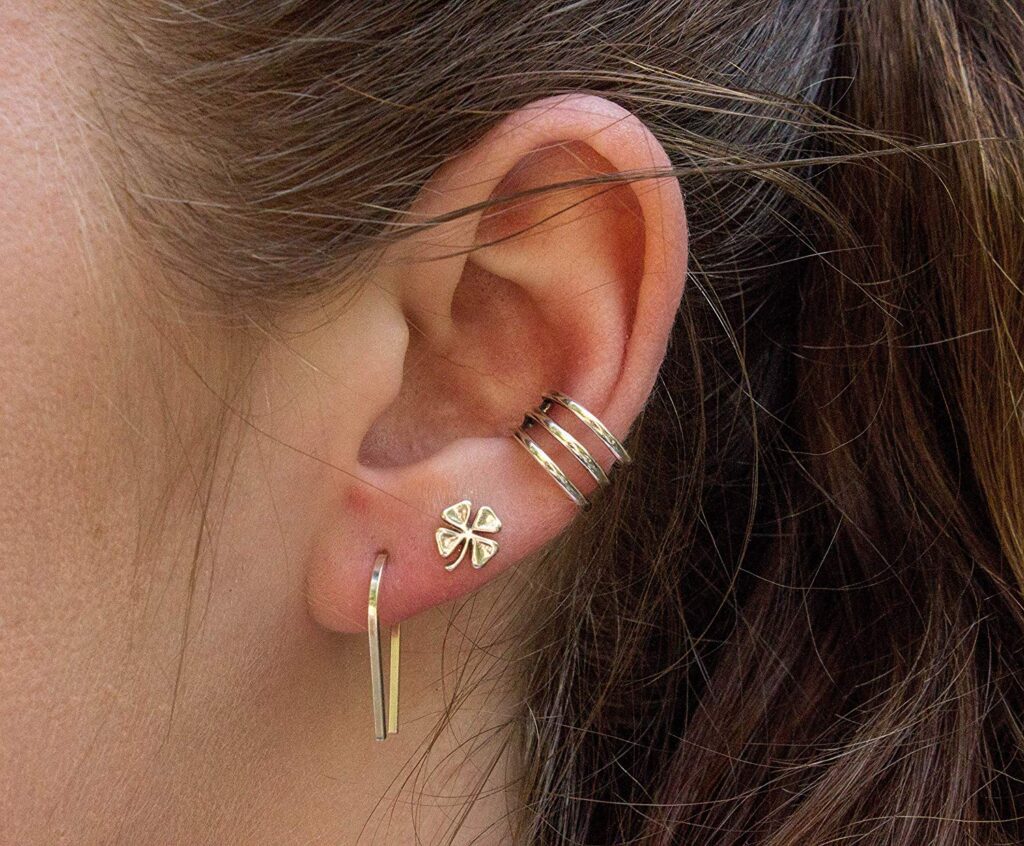
One of the common causes of swelling is earlobe piercing. Immediately after the piercing procedure, you might experience a little pain, redness, and swelling. This swelling will last for a few days if you follow the right piercing aftercare.
To relieve the swelling due to piercing, apply cold compresses and take anti-inflammatory medications. Visit your doctor if the swelling persists for more than just a few days to ensure you do not have any infection developing.
2. Allergic reaction
The other reason could be allergic reactions to various hair and face care products (soap, shampoo or hair sprays) as well as some jewelry. Inexpensive earrings often contain nickel which has been found to cause an allergic reaction that might lead to swellings and itchiness.
Allergic reactions can be prevented by going for stainless steel, gold or silver jewelry that do not contain any nickel. Swelling resulting from an allergic reaction to earrings can be painful, cause bleeding and discharge from the piercing hole.
To treat swollen earlobes due to allergic reactions, avoid contact with allergens, remove any jewelry that causes the allergic reaction and go for antihistamines if the reaction is serious. Home remedies such as cold compresses using ice packs or trying OTC painkillers might help too.
3. Infection
Ear infection, especially after a piercing is known to cause swelling on earlobes. Such infection will be accompanied by symptoms such as pain, tenderness, pus discharge, swollen lymph node under close to your earlobes etc. Try the various ways to treat an infected ear piercing or see a doctor for antibiotics prescription.
4. Bug or insect bites – itchy, red and swollen

Bedbug or Insect bites can cause swelling, itchiness, and redness. This might be a cause of swollen earlobe if you woke up in the morning with one yet you never had it before you went to bed. Quick-relief to insect bites might be through OTC antihistamines as well as the use of hydrocortisone topical cream. If the swelling goes beyond ears to the neck (throat) and face regions you might be having a more serious allergic reaction that might require medical attention.
5. Cauliflower ear
Hematoma Auris or cauliflower ear “refers to a deformity of the ear caused by blunt trauma or other injuries, such as what may occur during a boxing or wrestling match” [webmd.com] which if not treated can prevent normal blood circulation leading to lumpy or bumpy appearance i.e. a permanent deformity on ear cartilage and earlobes.
This can cause swelling, infection scarring (formation of scar tissue), and thus the deformed ear appearance. Early treatment is required to avoid blood clots that stop blood circulation. See a doctor if you end looking very red (purple or white) after blunt trauma.
6. Abscess
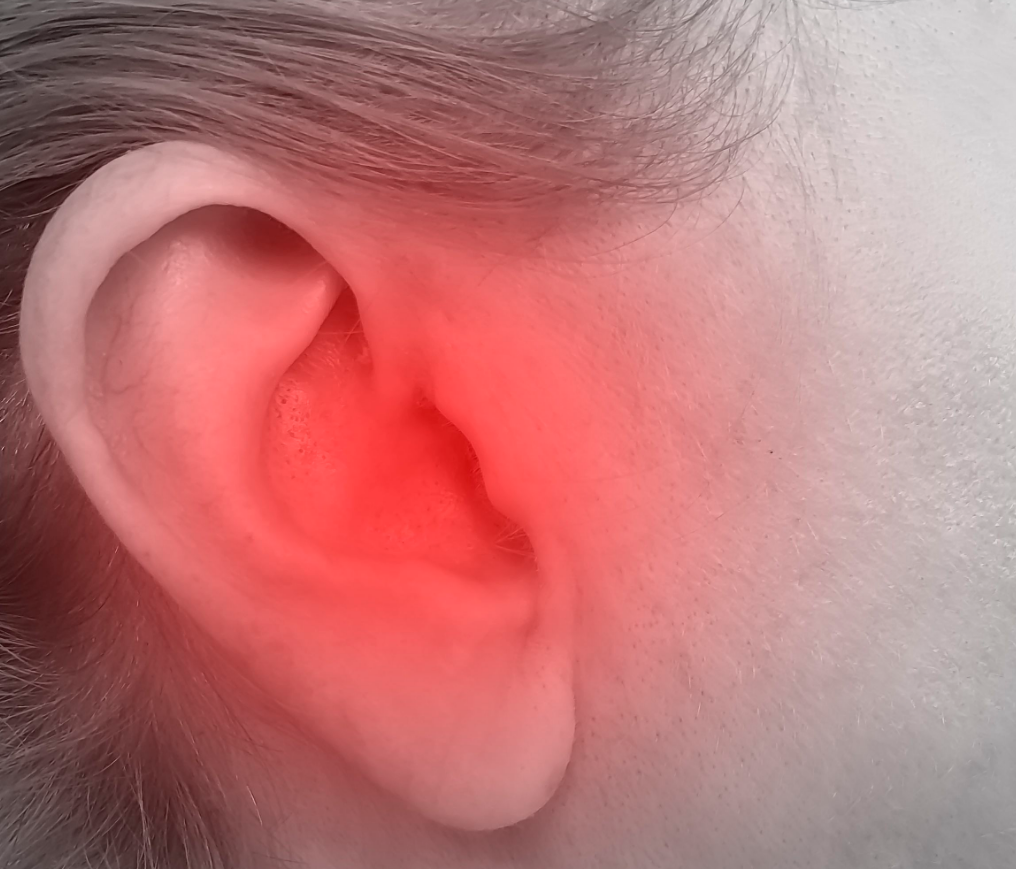
Another common cause of swelling an abscess. This is “a painful collection of pus, usually caused by a bacterial infection” [www.nhs.uk] that develops as white blood cells attack a bacteria trying to enter your body. You should suspect you have abscess them if you have “swollen, pus-filled lump under the surface of the skin” [www.nhs.uk] appearance.
An abscess often naturally drain, shrink and dry away. However, you might need draining as well as the use of antibiotics to clear the infection completely.
7. Swelling under earlobe due to a pimple or acne
Having a pimple can result in swelling behind, below or anywhere on your earlobes. Pimples or zits form when dead skin and “excess oil getting trapped in the pores” [wikipedia.org] and gets infected with bacteria. Pimples can affect you anywhere including on your earlobes. Pimples are often inflamed, cause redness, tenderness, and swelling.
Pimple treatments include the use of OTC products such as salicylic acid, benzoyl peroxide, or triclosan (an antibacterial agent). Severe cases might require prescribed medications such as isotretinoin (a retinoid), as well as antibiotics such as tetracycline and erythromycin. Furthermore, try the various home remedies suggested, practice good hygiene, and avoid popping your pimple.
8. Cysts and boils
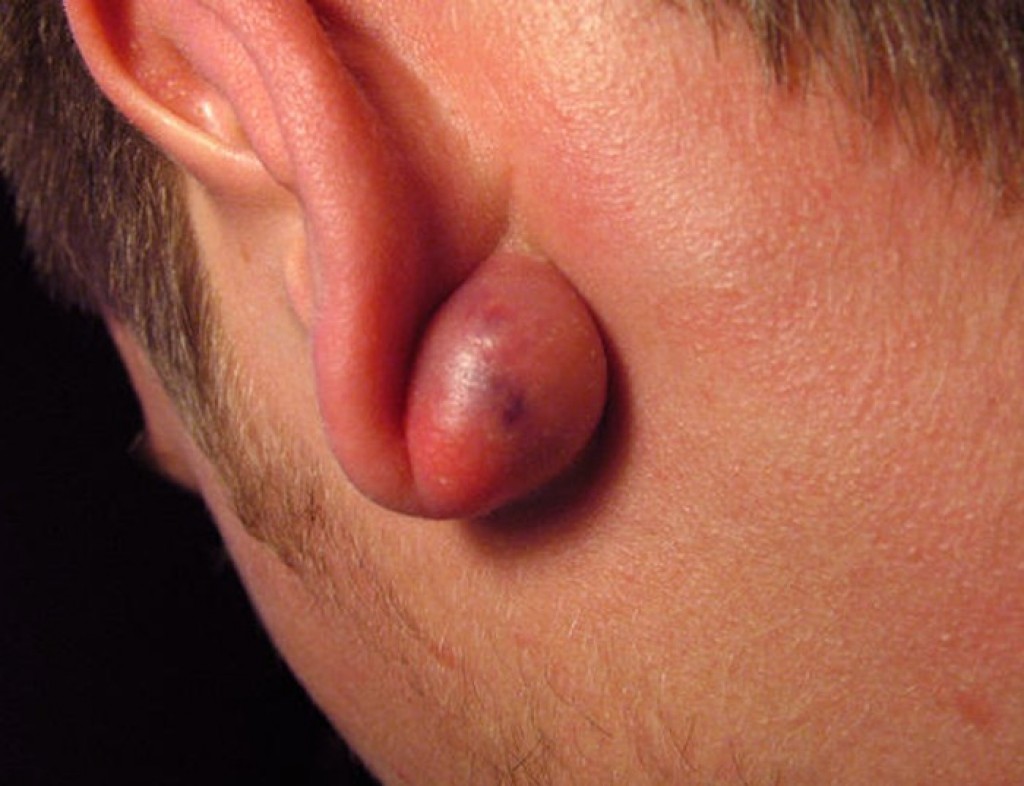
Another possible cause of is cysts if they feel lumpy. Cysts are closed capsule or sac-like structures, typically filled with liquid, semisolid or gaseous material – very much like a blister.
They can occur on any part of the body and often occur within the body tissues. They are caused by a number of things including infections, genetic conditions, tumors, parasites, cell defects, the trauma that breaks blood vessels, blocked ducts, chronic inflammatory problems, among other causes. Treatment is by draining or surgical removal.
Boils and carbuncles, on the other hand, are red, painful lumps due to localized infections on the skin. They often caused by staph bacteria that might enter the skin through broken skin (gazes and cuts) or through hair follicles.
9. Stretching using a bigger piercing jewelry
Stretching of earlobe piercing can cause temporary swelling and pain especially after you go a gauge up or result in infection. Both cases will result in a swelling, and pain or tenderness. To know it is not just the stretching irritation, you will see redness and swelling, abnormal discharge as well as swollen lymph node under your ears.
If the infection is very serious, see a doctor. Otherwise, milder symptoms can be managed by various post-piercing care routines.
10. Other causes
Other possible causes include contact dermatitis, blunt trauma, surgical operations such as facelift (often leave the them enlarged for some days), rash, folliculitis (for people with hairy ears), lumps, auricular chondritis (causes redness, swelling and inflammation of ear cartilage that might end up causing a swollen earlobe too), among others.
Red swollen ear lobe that are itchy
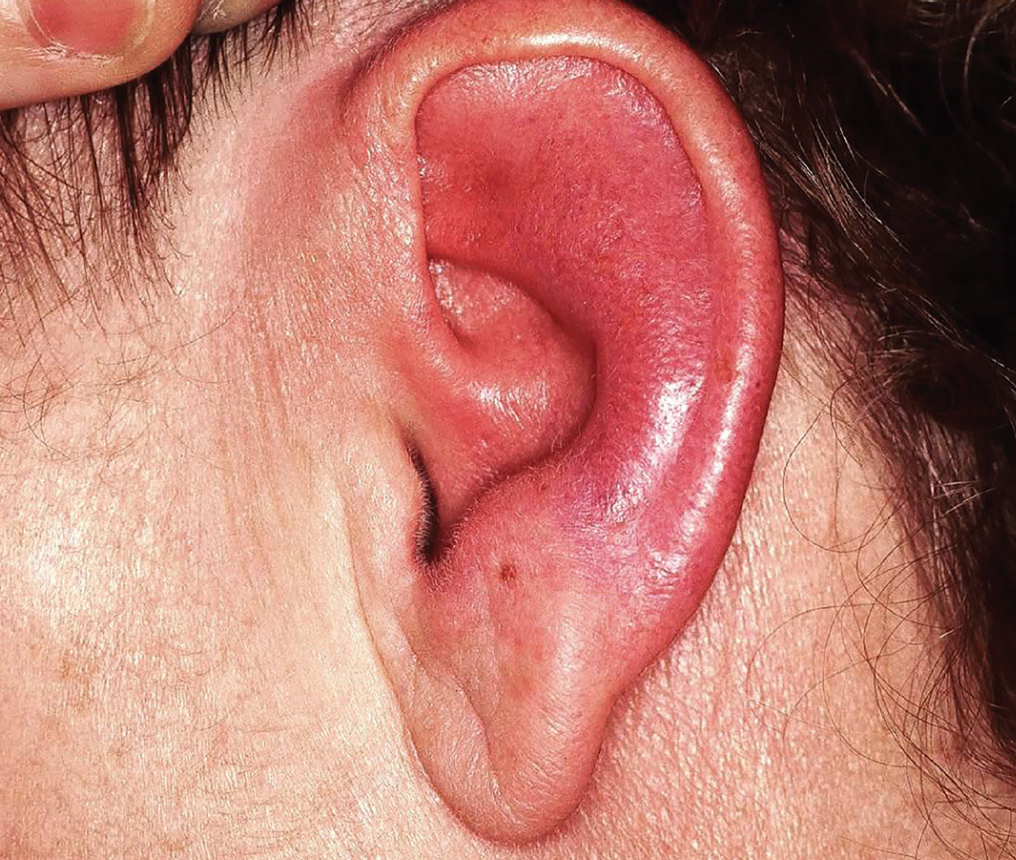
Several of the causes we have already mentioned can lead to not only red swollen earlobes but also painful, itchy and ones. If they are red and swollen, possible causes could be allergic reactions, contact dermatitis, a pimple, bug bite, piercing, infection, blunt trauma, rash, folliculitis, among others
How to treat an earlobe swelling
While looking at each of the causes, we mentioned ways in which you can treat that specific problem. Bug bites and allergies are managed by antihistamines, bacterial infection by antibiotics (creams and oral medications), while draining and surgical removal could be good for cysts and pimples especially if they are deep.
To relieve the pain, warmth, and tenderness that usually accompany the swelling, cold compresses (using icepacks), use of anti-inflammatory medications and taking OTC painkillers will be of help.
When to see a doctor
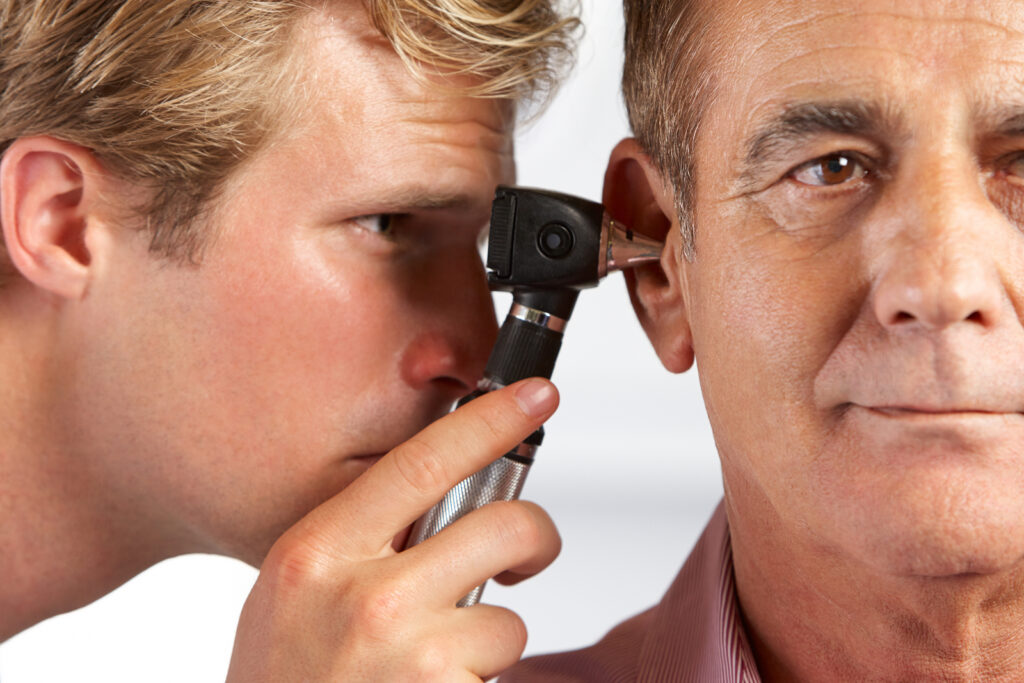
If your earlobes remain swollen for several days, are oozing greenish or yellow discharge from the piercing site, or you have a serious allergic reaction, consider seeing a doctor.
